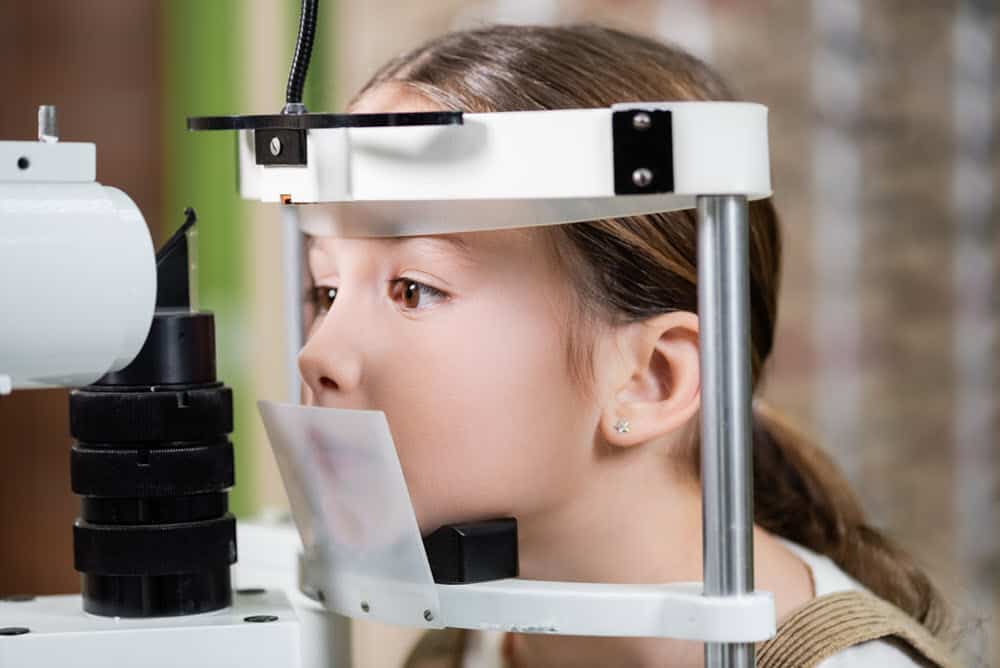What is Developmental Optometry?
Developmental optometry is a specialized field focused on enhancing visual performance that was formally introduced in 1971 with the formation of the College of Optometrists in Vision Development (COVD).
Developmental vision is complementary to behavioral optometry, which has its origins in the Optometric Extension Program (OEP).
Note that in addition to the detailed information provided below, there are many excellent publications that will provide you with more information about developmental vision.
Understanding Developmental Optometry
Foundations of Developmental Optometry
Role of a Developmental Optometrist
A developmental optometrist assesses visual problems beyond mere clarity of vision. They design and implement vision therapy programs to enhance visual skills. These eye care professionals support individuals in developing visual abilities that contribute to effective reading, learning, and daily activities.

A Developmental Optometrist helps to improve vision which may lead to learning and performance improvements
Core Principles of Vision Therapy
Vision therapy encompasses several principles aimed at enhancing visual function. These principles focus on more than mere clarity of vision; they address a suite of visual skills crucial for effective sight.
Visual Acuity and Eye Health
Binocular Vision and Eye Teaming
Visual Motor Integration
Specific Conditions and Treatments
Developmental optometry addresses various visual function issues through targeted treatments tailored to specific conditions.
Amblyopia (Lazy Eye) and Strabismus
- Amblyopia (Lazy Eye): This condition occurs when one eye fails to achieve normal visual acuity, despite the use of glasses. Treatment often includes patching the stronger eye to improve the weaker one. Vision therapy exercises are also effective in stimulating visual development and eye teaming.
- Strabismus: Misalignment of the eyes, either turning inward, outward, up, or down. Treatment may involve eye exercises, glasses, prisms, and in some cases, surgery. The goal is to improve binocular vision and eye coordination.
Convergence Insufficiency and Double Vision
- Convergence Insufficiency: This condition signifies a difficulty in keeping both eyes working together when looking at close objects. Symptoms include eye strain, headaches, and double vision. Treatment generally includes vision therapy to improve eye coordination and the ability to maintain clear, single vision at near distances.
- Double Vision: Also known as diplopia, can stem from various causes including poor binocular vision or eye muscle problems. Treatment depends on the cause and may involve prism lenses or vision therapy to train the eyes to work together effectively.
Visual Information Processing Disorders
These disorders affect how visual information is understood and processed by the brain. They can impact reading, writing, and learning abilities.
- Visual Perception: Refers to the brain’s ability to make sense of what the eyes see. Therapy often includes exercises to improve skills such as pattern recognition and spatial awareness.
- Visual Processing: Encompasses the mental processes that give meaning to what we see. When disrupted, it can affect memory, attention, and the ability to discern details. Activities and exercises designed to enhance these skills are a central part of treatment.
Vision Therapy in Practice
Assessment Through Comprehensive Exam
A comprehensive eye exam kickstarts the process. Here, a developmental optometrist examines all aspects of eye health, vision, and visual skills to diagnose underlying issues.
Customization of Vision Therapy Programs
Therapists tailor vision therapy programs to meet individual needs. They design progressive visual tasks focusing on improving specific eye functions and visual processing skills.
Collaboration with Other Health Professionals
Occupational therapists and other health professionals often collaborate with vision therapists to ensure a well-rounded approach to vision care and rehabilitation. This teamwork ensures comprehensive patient care.
Impact of Developmental Optometry on Learning
Visual Challenges in the Classroom
Children with visual issues may struggle to track text on a page or on the board, leading to learning hurdles. Developmental optometry aims to identify and treat these issues, improving a child’s ability to focus and absorb information.
Improving Reading and Writing Skills
Misdiagnosis and Learning Difficulties
Sometimes, children with visual processing issues get wrongly labeled as having learning difficulties like dyslexia. Developmental optometry can discern between visual problems and other learning disorders, ensuring children receive the correct support to thrive in educational settings.
Advanced Applications of Vision Therapy
Vision therapy extends beyond eye exercises, targeting advanced applications that enhance daily life and specific skills. It involves methodologies that improve vision functionality, sports performance, and rehabilitation processes after brain injury.

Vision Therapy May Contribute Towards Increased Performance in Many Activities, Including Sports
Sports Performance Enhancement
Vision therapy plays a crucial role in sports, where superior visual skills can translate into better athletic performance. It hones abilities such as dynamic visual acuity, eye tracking, and depth perception, all of which are essential for sports that require high levels of coordination and balance. Athletes undergo vision therapy to sharpen these skills, aiming to gain a competitive edge.
Rehabilitation after Brain Injury
Synergistic Therapies and Holistic Approach
Vision therapy often integrates with other therapies for a more holistic approach to treatment. This synergy may involve occupational therapy or physical therapy, which complement vision therapy to address the needs of the whole body. Practitioners tailor these synergistic therapies to each patient, considering how improved visual skills can positively affect overall well-being and daily living.
Recognizing Vision Problems

A Comprehensive Eye Exam Can Help to Determine if Headaches are Due to Vision Problems
Symptoms and Indicators
Vision problems often present through consistent symptoms. Individuals may report eye fatigue after tasks like reading or computer work. Headaches, frequent squinting, and blurred vision can also signal eye issues. They might experience dizziness, especially when there has been a rapid change in vision. Eye strain during prolonged visual activities may suggest uncorrected refractive errors.
- Eye fatigue: feelings of tired eyes, especially after visual tasks
- Headaches: ranging from mild to severe, linked to visual activities
- Dizziness: a sense of unbalance or spinning, related to vision shifts
- Blurred vision: lack of sharpness, difficulty focusing on objects
Common Misconceptions
People often mistake vision-related headaches or fatigue for ordinary causes like lack of sleep or stress. The assumption that such discomforts will resolve without medical intervention can lead to neglect of underlying vision issues. The thought that blurred vision is only short-term or situational can delay the pursuit of professional help. Recognizing these symptoms as potential indicators of vision problems encourages timely evaluation by eye care professionals.
The Role of Equipment and Tools
Types of Lenses and Prisms
- Single Vision Lenses: They correct for distance or near vision.
- Therapeutic Lenses: They train the eye muscles to focus correctly.
Prisms alter light entering the eye to help with:
- Eye alignment issues
- Binocular vision problems
Technological Advancements in Vision Therapy
Eye-Tracking Devices: These tools measure and train a patient’s ability to follow moving objects accurately. They provide objective data on eye movement patterns.
Software Programs: Therapists use specialized programs to develop visual skills. These include exercises for:
- Eye-hand coordination
- Visual processing speed
Professional Advocacy and Education
College of Optometrists in Vision Development
The College of Optometrists in Vision Development (COVD) stands as a leading organization that supports developmental optometrists through certification, education, and research. It advocates for best practices in pediatric vision care, thereby setting a standard for therapeutic techniques that aid in vision development.












